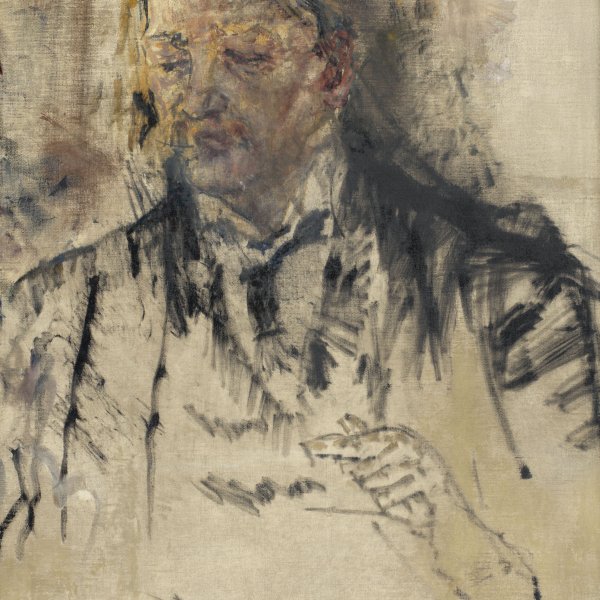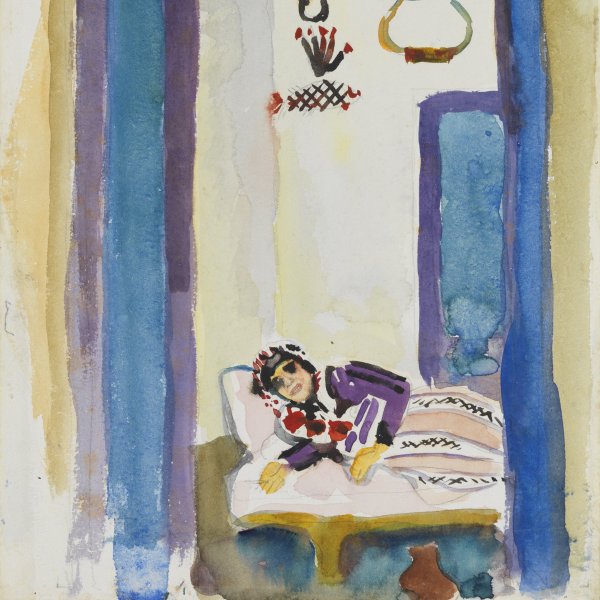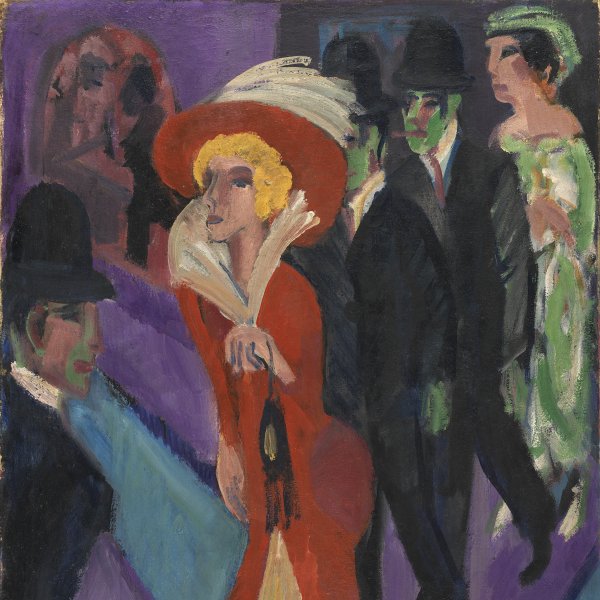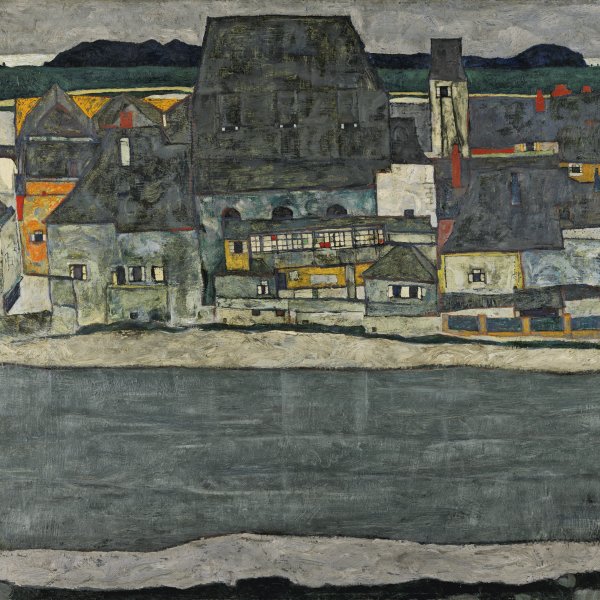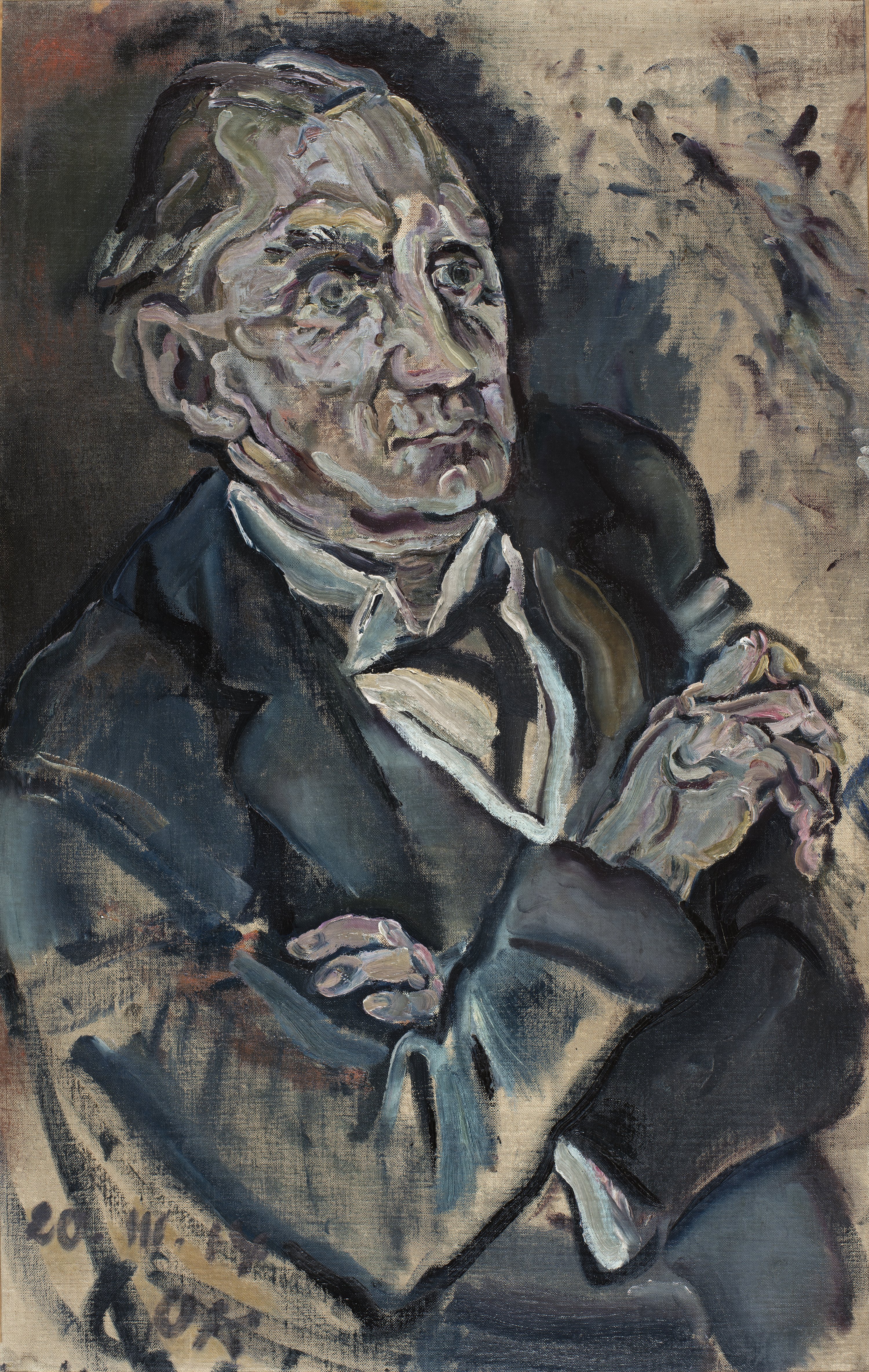Portrait of Max Schmidt
Oskar Kokoschka began painting portraits in his youth as a self-taught artist. His portrait gallery is a matchless pictorial depiction of the Viennese intellectual set and haute bourgeoisie and one of the most original contributions to the history of modern portraiture. From the outset the young artist brought to this genre his own personal formula for representing human psychology, according to which physical likeness was subordinate to capturing the sitter’s feelings. As he himself confessed in his diary, “I tried to intuit from the face, from its play of expressions, and from gestures, the truth about a particular person, and to recreate in my own pictorial language the distillation of a living that would survive in my memory.”
The portrait of Max Schmidt — belonging to the Museum’s permanent collection — was the central fragment of the Triple Portrait of the Schmidt Brothers, which was cut into three parts in the 1950s. The portrait of Carl Leo belongs to the Carmen Thyssen-Bornemisza Collection and that of Hugo is reputedly lost. The Schmidt brothers owned the interior decoration firm Friedrich Otto Schmidt, which was founded in Vienna in 1854 and still exists. At the beginning of the twentieth century, this company, which crafted its furniture by hand to a high degree of technical perfection, boasted a few members of the imperial family and prominent figures from the Viennese aristocracy and haute bourgeoisie among its clientele. The Viennese architect Adolf Loos, Kokoschka’s chief mentor during his artistic beginnings, sometimes collaborated with the firm as an advisor and designer and, as Peter Vergo points out, it was he who secured the commission for the portrait in 1911.
The original painting was executed in two different phases and each of the three sitters was painted separately. The sketchy portraits of Carl Leo (right) and Hugo (left), dated 1911, were done on the same day — in the morning and the afternoon according to the inscriptions beneath the sitters: “Vormittag” (morning) and “Nachmittag” (afternoon) — but for some unknown reason were left unfinished. The portrait of Max, the only one that is finished, was painted three years later, on 20 March 1914, as stated in the inscription beneath the subject.
Kokoschka had already painted a few double portraits, prominent among which is that of Hans and Erika Tietze, but he had never before attempted one of three sitters. In the portrait of the Tietzes, he had solved the problem of communication between the couple by means of a dialogue of hands, but this device was much more complicated to employ with three subjects. As can be seen in the photograph of the painting in its original state, Kokoschka wished to emphasise the central figure by making him stand out forcefully between his two brothers, who gaze at him in a somewhat withdrawn posture. Unfortunately, owing to the mutilation of the painting, the dialogue of gestures that the artist introduced between the three figures and the variation in the stylistic languages used for each in order to differentiate their distinct personalities have been lost forever.
The portrait of Max clearly evidences an evolution in Kokoschka’s style owing to the influence of past masters. During his trip to Venice with Alma Mahler in 1913, the artist was impressed by Venetian painting, particularly that of Titian and Tintoretto. Their mark can be found in Kokoschka’s use of a freer technique and in the more theatrical illumination of the portraits he painted immediately afterwards. A certain resemblance to El Greco, who was then being rescued from oblivion by the German historian Julius Meier-Graefe, is also evident in the works produced around this time.
Max Schmidt (1861–1935), the firm’s owner, had notable business acumen and managed to convert Friedrich Otto Schmidt into one of the most important design firms in Vienna. He was an openminded man and also a significant collector and patron of the arts, which led him to keep the triple portrait in his collection until his death. In 1962, the year it was exhibited in the retrospective of the artist at the Tate Gallery, the portrait was in Hamburg, in the collection of Professor Edgar Horstmann, and remained in his possession in 1966, when it was shown in the Zurich and Karlsruhe exhibitions. In 1979 it was sold in Hamburg by Hauswedell & Nolte to the Galerie Beyeler of Basel, which in turn sold it to Baron Thyssen-Bornemisza in 1982. It belongs to the permanent collection of the Museo Thyssen-Bornemisza since 1993.
Paloma Alarcó

